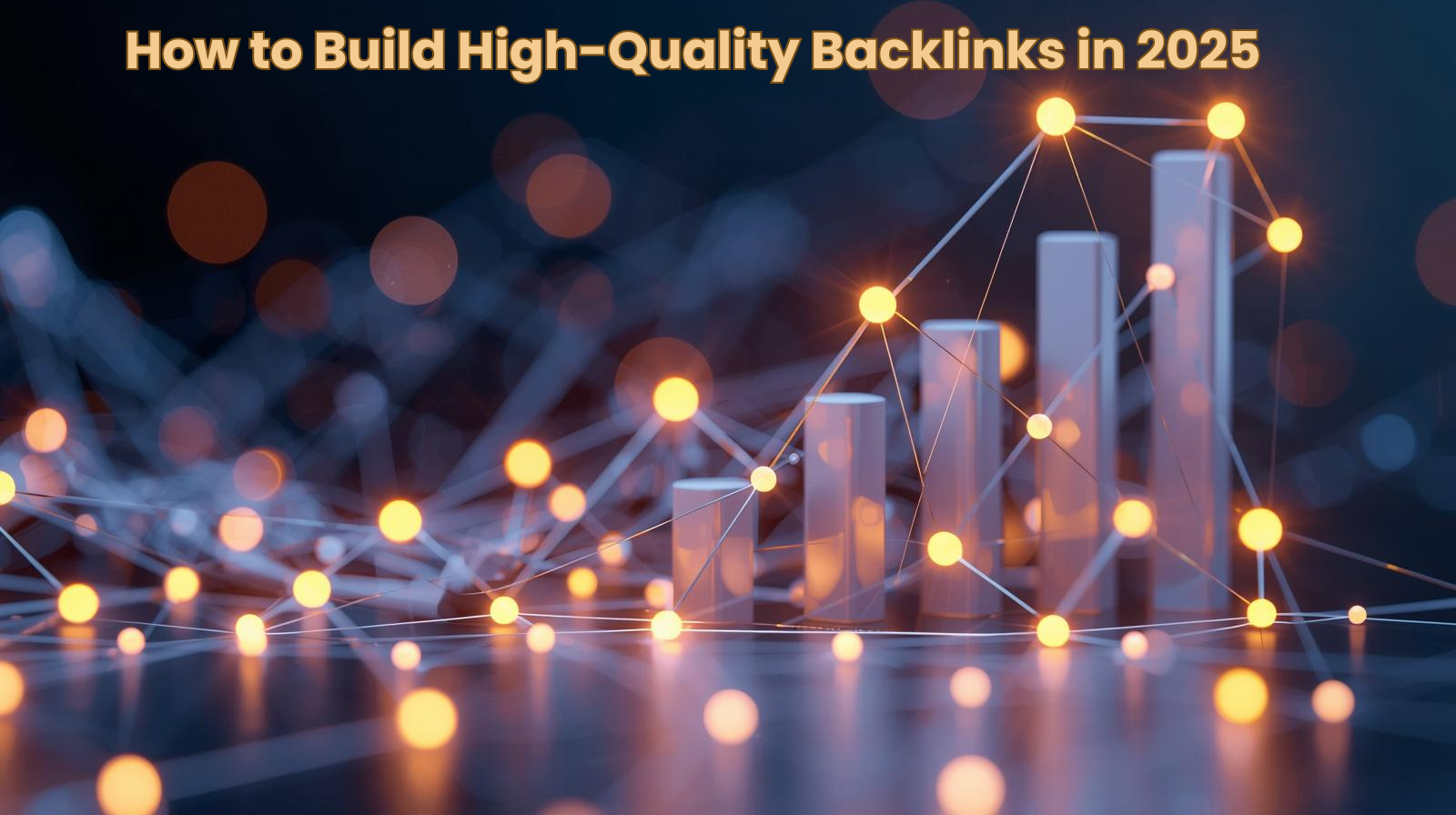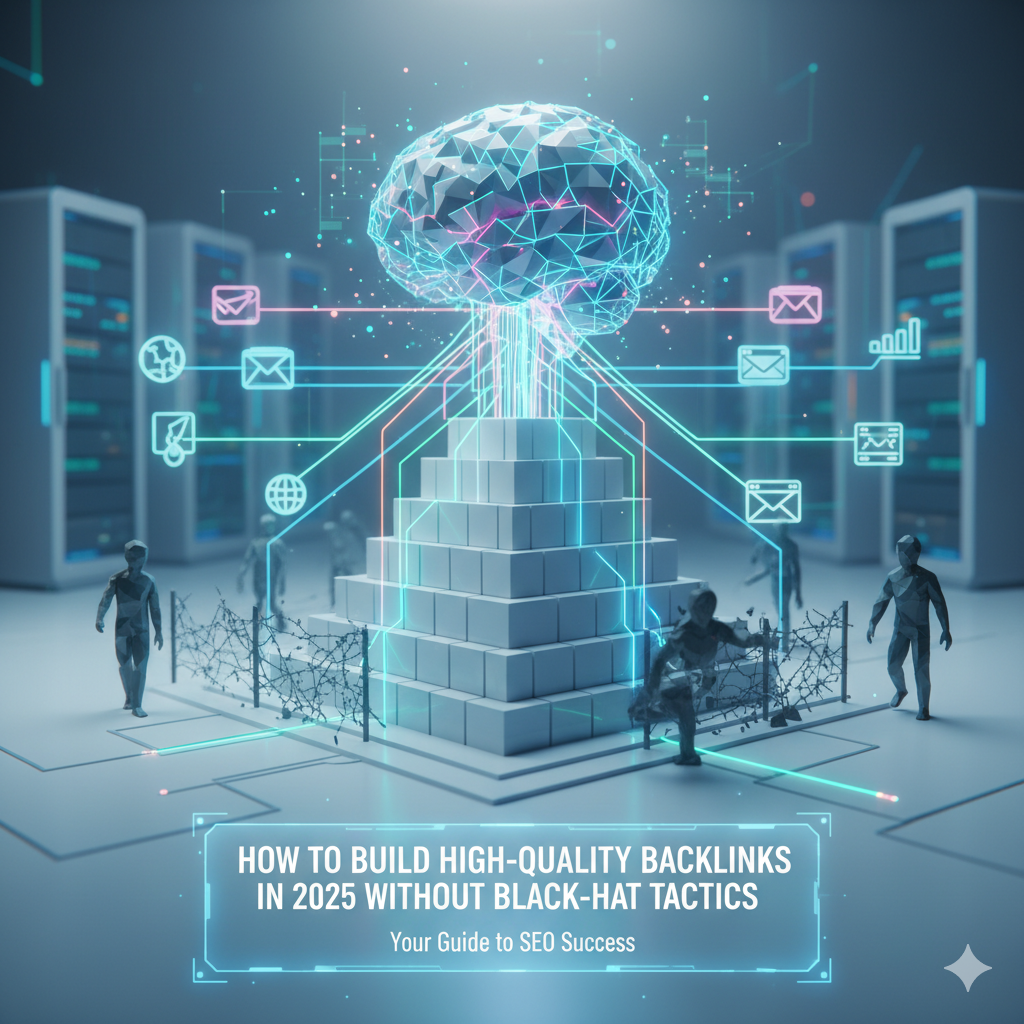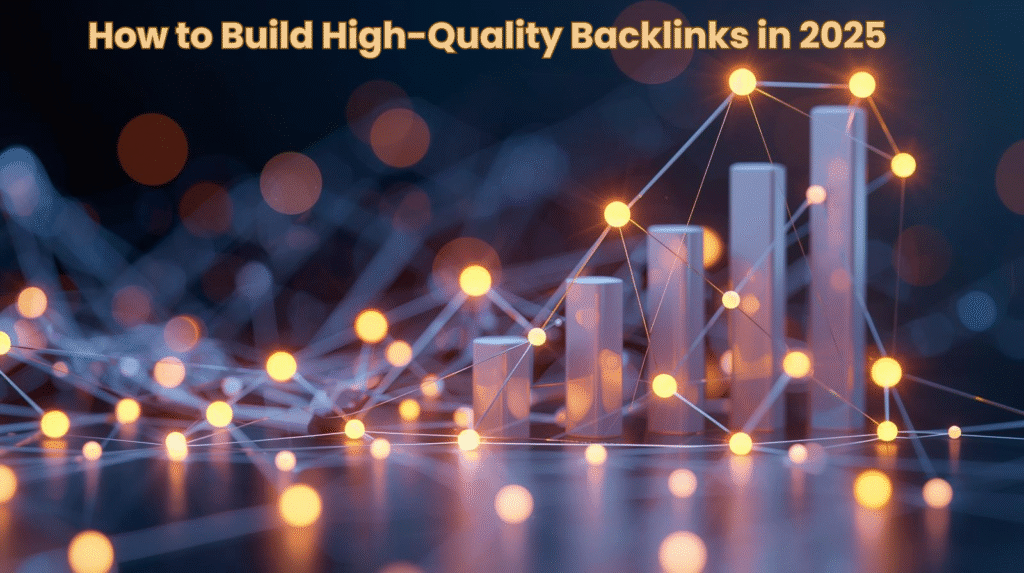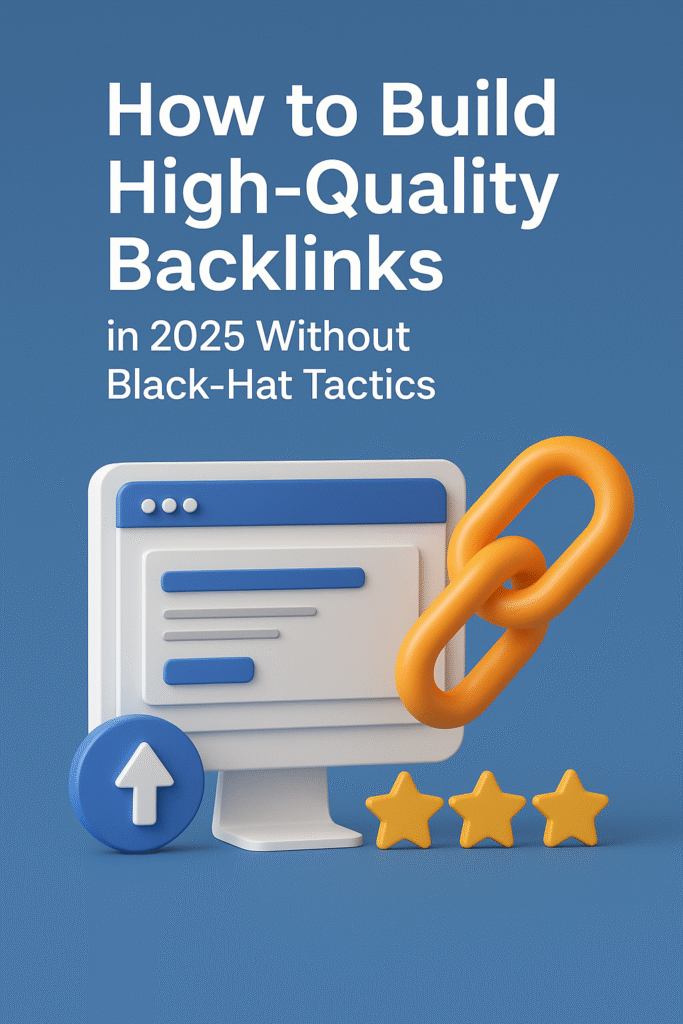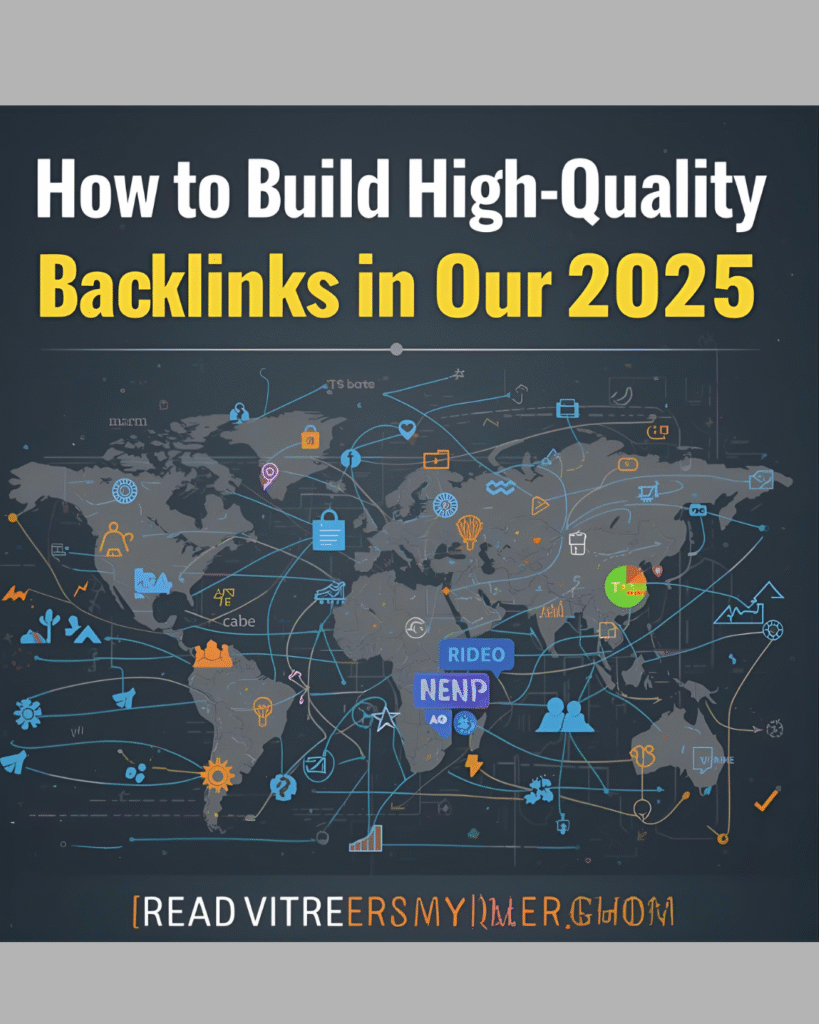Table of Contents
Backlinks remain the backbone of SEO, but in 2025, the way we build high-quality backlinks has evolved significantly. Unlike a decade ago, when websites could manipulate search results with link farms or private blog networks, Google’s algorithm has grown smarter. Today, the focus is no longer on the sheer number of links but on the quality, relevance, and authority of each backlink.
If you’re still relying on black-hat tactics like buying links, using spammy directories, or over-optimized anchor text, you’re putting your site at risk. Google is more aggressive than ever in penalizing manipulative strategies. Instead, the future of SEO lies in white-hat backlink strategies that drive long-term, sustainable growth.
In this blog, we’ll break down everything you need to know about how to build high-quality backlinks in 2025 without black-hat tactics, the strategies you should focus on, the tools that can help, and the mistakes to avoid.
Why High-Quality Backlinks Still Matter in 2025
Even in 2025, backlinks remain one of the top three ranking factors in Google’s algorithm. But here’s the catch: not all backlinks are created equal.
Backlinks and Google’s Algorithm Updates
Over the past few years, Google has rolled out updates like Helpful Content, SpamBrain AI, and Core Web Vitals improvements. These updates emphasize that backlinks should come from trustworthy, relevant, and authoritative sources. If your website earns links from high-authority domains, it sends strong signals to Google that your content deserves higher rankings.
Quality vs. Quantity – The Shift in SEO
A few years ago, 1,000 low-quality backlinks might have helped you rank. But in 2025, just 10 contextual backlinks from authority websites can outperform thousands of spammy links. Quality links bring more organic traffic, boost domain authority, and improve trustworthiness.
The Role of Backlinks in E-E-A-T
Google’s E-E-A-T framework (Experience, Expertise, Authority, Trustworthiness) plays a huge role in search rankings. High-quality backlinks act as “votes of confidence” for your expertise and authority in your niche. The more relevant authority backlinks you have, the stronger your website’s trust signals become.
What Makes a Backlink “High-Quality” in 2025?
Not all backlinks will benefit your site. To rank in 2025, you need to understand what makes a link truly valuable.
Relevance to Your Industry
Backlinks from sites in your niche carry far more weight than random links. For example, a digital marketing blog linking to your agency is more powerful than a cooking website linking to you.
Domain Authority and Trust Flow
Websites with high domain authority, topical authority, and trust flow provide the best backlinks. A link from a site like HubSpot or Search Engine Journal is far more valuable than hundreds of links from unknown blogs.
Placement & Contextual Relevance
Links placed within the body of an article are stronger than footer, sidebar, or comment section links. Google evaluates not just where the link comes from, but also how it’s used in context.
Anchor Text Best Practices
In 2025, over-optimized anchor text can trigger penalties. Instead of repeating “best SEO company” 50 times, use natural, diversified anchor text like SEO agency insights, digital marketing strategies, or guide to high-quality backlinks.
Proven White-Hat Strategies to Build High-Quality Backlinks in 2025
While black-hat shortcuts might be tempting, they’re unsustainable and often lead to penalties. Instead, you should focus on white-hat backlink strategies that Google rewards. Below are the most effective ways to build high-quality backlinks in 2025 without risking your site’s reputation.
Create Link-Worthy Content That Attracts Backlinks Naturally
The most powerful way to earn authority backlinks is by creating content that people want to reference. Google favors content that solves real problems, provides unique insights, or offers resources others in your industry can cite.
What Kind of Content Attracts Backlinks in 2025?
Comprehensive Guides & Tutorials → Long-form posts that cover a topic better than anyone else.
Case Studies & Success Stories → Businesses and marketers love linking to real-world results.
Original Research & Data Reports → If you publish statistics or surveys, other blogs and media outlets will naturally reference your content.
Interactive Tools & Resources → Calculators, templates, and checklists generate contextual backlinks from multiple sources.
💡 Example: If your agency creates a “2025 SEO Trends Report,” industry websites will likely link back to your insights.
Guest Posting the Right Way in 2025
Guest posting remains one of the most reliable ways to build backlinks, but it has changed over the years. In 2025, Google is strict about guest blogging spam, so the focus should be on quality and relevance.
Tips for Effective Guest Posting
Target high-authority sites in your niche (marketing, business, entrepreneurship).
Provide unique, actionable insights (not generic fluff).
Avoid overstuffed anchor text—use natural phrases like “learn how to build high-quality backlinks” instead of exact-match spam.
Build relationships with editors for long-term publishing opportunities.
By consistently contributing to authority websites, you can create a sustainable pipeline of organic backlinks.
HARO (Help a Reporter Out) & Digital PR for Backlinks
HARO and similar journalist outreach platforms remain a goldmine for backlinks in 2025. Journalists, bloggers, and publishers are constantly looking for expert opinions and data. If you provide valuable quotes or insights, they’ll credit you with a backlink.
How to Maximize HARO & PR Outreach
Sign up for HARO or Qwoted to receive daily journalist requests.
Pitch short, expert responses to increase chances of selection.
Build relationships with journalists for future features.
Use PR campaigns to publish thought-leadership pieces in top industry publications.
This method builds trustworthy backlinks from high-domain authority websites—sometimes even from major outlets like Forbes or Entrepreneur.
Resource Page Link Building
Resource pages are curated lists of valuable tools, guides, and articles in a specific niche. These are perfect places to earn contextual backlinks.
Steps to Earn Resource Page Links
Search Google for queries like:
“Best digital marketing resources”
“Recommended tools for businesses”
Reach out to site owners, suggesting your content as a valuable addition.
Ensure your content is unique and resourceful enough to stand out.
Resource pages are evergreen sources of authority backlinks since they continuously drive referral traffic and boost SEO.
Skyscraper Technique Updated for 2025
The Skyscraper Technique, popularized by Brian Dean, still works—but it has evolved. Instead of simply making “longer” content, in 2025 you need to make content that’s:
More visually engaging (videos, infographics, charts)
Backed with original data
Optimized for featured snippets and voice search
Structured for mobile-first indexing
Once your improved content is live, reach out to websites linking to outdated resources and suggest they link to your fresh, high-quality version. This method consistently earns white-hat backlinks.
Leveraging Social Media for Natural Links
While social shares themselves don’t count as backlinks, social platforms help amplify content visibility, leading to organic backlink building.
Share long-form blogs on LinkedIn and Medium to reach professionals.
Post micro-content on Twitter (X) to attract journalists and bloggers.
Use Instagram and TikTok to promote case studies and drive traffic to your website.
Social media doesn’t directly pass link juice, but it creates awareness that leads to backlinks from bloggers, journalists, and industry peers.
Backlink Opportunities Businesses Often Overlook
Many marketers focus on guest posts or directories but ignore powerful organic backlink opportunities that are right in front of them. Let’s explore some of the most underrated yet effective ways to build high-quality backlinks in 2025.
Local Citations & Business Directories
Local SEO is stronger than ever in 2025. For service-based businesses and agencies, getting listed on trusted local directories provides both visibility and high-quality backlinks.
Top Directories to Consider
Google Business Profile
Bing Places
Yelp
Clutch
G2
Industry-specific directories
Each citation strengthens your brand credibility and provides a contextual backlink to your website. Ensure your NAP (Name, Address, Phone) information is consistent across all listings — it signals legitimacy to Google.
💡 Pro Tip: Submit to high-authority local and niche directories only. Avoid low-quality, spammy directories that can harm your SEO.
Brand Mentions to Backlinks
Often, your brand or agency is mentioned online without a link. These unlinked mentions are a goldmine for backlinks.
Here’s How to Turn Mentions into Links:
Use tools like Google Alerts, Mention, or Ahrefs Alerts to find brand mentions.
Reach out to the website owner, thank them for mentioning your brand, and politely ask them to add a backlink.
Personalize your email — emphasize how the backlink helps readers access more info.
This simple outreach method can quickly earn authority backlinks without creating new content.
Partnerships & Collaborations
Strategic partnerships can open doors to multiple backlink opportunities. Collaborate with complementary businesses, agencies, or influencers to co-create:
Joint webinars or podcasts
E-books or whitepapers
Co-branded case studies
Each partner will likely share and link back to the project, resulting in natural, high-quality backlinks and more organic traffic.
Broken Link Building
Broken link building continues to be an effective white-hat strategy in 2025. It’s simple but powerful: you help webmasters fix broken links while earning contextual backlinks for your content.
Step-by-Step Process
Use tools like Ahrefs Broken Link Checker or Check My Links (Chrome extension).
Identify pages in your niche with dead or 404 links.
Create (or already have) a relevant piece of content that fits as a replacement.
Reach out to the webmaster, letting them know about the broken link and suggesting your page as a substitute.
This approach provides value to the site owner while earning you a legitimate backlink.
Tools & Analytics for Backlink Success in 2025
To build backlinks strategically and track their performance, you need the right set of SEO tools. In 2025, several platforms make backlink discovery, analysis, and outreach easier than ever.
Ahrefs – The All-in-One Backlink Authority
Ahrefs remains the most trusted tool for backlink analysis. You can:
Analyze your competitors’ backlinks and replicate successful ones.
Identify broken or lost backlinks.
Track referring domains, anchor text, and link quality metrics.
Monitor link growth trends over time.
Use Ahrefs to discover authority backlink sources and craft better outreach campaigns.
SEMrush – Competitor & Outreach Intelligence
SEMrush offers deep insights into backlink profiles, domain authority, and keyword overlap. The Backlink Gap Tool helps you compare your backlink profile with competitors and uncover missing opportunities.
You can also use its Link Building Tool to manage outreach campaigns directly inside SEMrush — making your workflow smoother and more data-driven.
Moz Link Explorer – Domain Authority Tracking
Moz provides clear metrics like Domain Authority (DA) and Spam Score to evaluate link quality. You can easily check whether your backlinks are helping or hurting your SEO performance.
Tracking domain authority growth helps measure the success of your link-building strategies over time.
Google Search Console – Free but Powerful
While many premium tools exist, Google Search Console remains a must-have. It helps identify:
Who’s linking to your site
Which pages earn the most backlinks
Anchor text distribution
Regularly reviewing your backlink profile in Search Console ensures you’re aware of toxic or spammy links that could affect rankings.
AI-Powered Backlink Prospecting Tools
AI is transforming SEO workflows in 2025. Tools like Respona, Pitchbox, and BuzzStream now integrate AI to identify the most relevant outreach targets, personalize email pitches, and even predict response rates.
AI streamlines the process, saving time while improving link quality. However, always add a human touch — authenticity still matters when building genuine connections.
Common Backlink Mistakes to Avoid in 2025
Even experienced marketers sometimes make backlinking errors that can damage SEO performance. Avoid these pitfalls to maintain a healthy backlink profile.
Over-Optimized Anchor Text
Repeating the same keyword-rich anchor text (“best SEO agency,” “buy backlinks”) signals manipulation to Google. In 2025, use a diverse anchor text mix, such as branded terms, generic phrases, and natural variations.
Example: Instead of “best SEO company,” use “learn SEO best practices” or “digital marketing insights.
Buying Links or Using Link Farms
Purchasing backlinks might offer quick results, but it’s the fastest way to get penalized. Google’s AI-based SpamBrain can detect unnatural link patterns instantly. Always prioritize white-hat, organic backlinks over shortcuts.
Ignoring Relevance in Favor of Authority
A backlink from a high-DA site that’s irrelevant to your niche is less valuable than one from a smaller but industry-related site. Always prioritize contextual backlinks that align with your content topic.
Conclusion: Building Sustainable, High-Quality Backlinks in 2025
In 2025, link building is no longer a numbers game — it’s a trust and relevance game. The days of black-hat link farms and spammy tactics are gone for good. To build high-quality backlinks, brands must focus on authenticity, authority, and real relationships.
Every backlink you earn should serve a purpose: helping users discover valuable content, strengthening your brand’s online authority, and signaling trust to Google. When your backlinks come from relevant, authoritative, and contextual sources, they drive both ranking power and genuine traffic.

